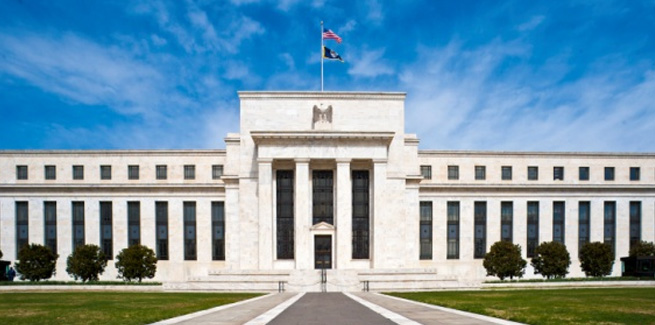In light of the economic threat posed by the coronavirus (COVID-19) outbreak, the US Federal Reserve has slashed its funds rate by 100 bps to a target range of 0-0.25 per cent.
This follows the 50 bps emergency cut announced by the Fed announced earlier this month.
Since August 2019, the Fed has cut the funds rate by a cumulative 2 per cent.
The Fed said it would maintain the target range “until it is confident that the economy has weathered recent events and is on track to achieve its maximum employment and price stability goals”.
“This action will help support economic activity, strong labour market conditions, and inflation returning to the committee’s symmetric 2 percent objective,” the Fed statement read.
In addition, the central bank will recommence quantitative easing (QE), committing to purchasing up to $500 billion in US Treasury bonds and $200 billion in residential mortgage-backed securities (RMBS) over the coming months.
Moreover, the Fed has stated that in cooperation with its foreign counterparts, it would undertake “coordinated action to enhance the provision of liquidity via the standing US dollar liquidity swap line arrangements”.
The Fed, the Bank of England and the Reserve Bank of Australia (RBA) have all recently made moves to strengthen the liquidity positions of the banking sector.
Reflecting on the Fed’s decisions, ING Economics’ chief international economist, James Knightley, said that while he was anticipating such a move, he was surprised that central bank moved ahead of its scheduled board meeting.
However, Mr Knightley noted that with “disruption set to intensify”, the Fed “clearly thought it prudent” to make a move before financial markets opened on Monday morning.
Mr Knightley said he is expecting the COVID-19 outbreak to cause significant cross-sector disruption, equal to the global financial crisis.
“The supply crunch in manufacturing, the panic in the financial sector and the collapse in airline travel, hotel stays and leisure activities means we could see a quarterly contraction of the scale reached during the height of the financial crisis, especially with the prospect of some city lockdowns,” he said.
As a result, Mr Knightley is forecasting an 8 per cent annualised second quarter (2Q20) contraction in the US GDP, relative to the -4.4 per cent decline in 1Q09 and the -8.4 per cent decline in 4Q08.
The economist concluded by noting that the Fed’s actions would not “rescue the US economy from recession” but could help “mitigate the risks from financial tensions that could make the growth and jobs outlook far, far worse”.
“It will also offer breathing room before an anticipated fiscal stimulus and a potential lending scheme provided by the Treasury materialise,” he added,
“That said, only better news on the prognosis for COVID-19 will return us to ‘normality’.
“Like most, we hope this will be over by the summer, but the Fed cannot take that for granted, and consequently this justifies an aggressive response that can always be reversed.”
[Related: RBA provides banks with $8.8 billion liquidity boost]

